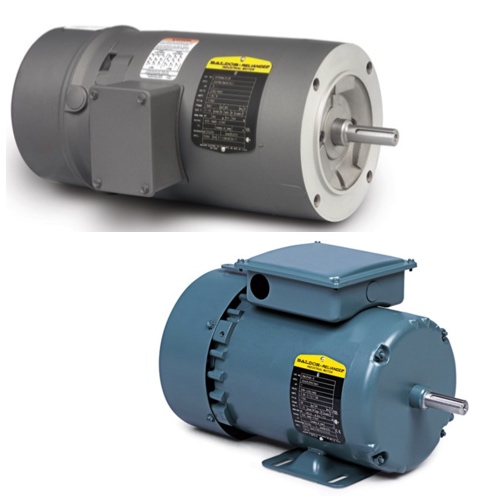Brake Motors

RSP Supply carries a full line of brake motors designed for precise control, safety, and minimal maintenance in demanding industrial environments. These motors integrate a mechanical brake that automatically engages when power is removed, ensuring secure load holding and safe operation. Built with totally enclosed fan-cooled housings, brake motors are suitable for harsh conditions and continuous-duty applications where controlled stopping and starting are essential to maintaining productivity.
Selecting the right brake motor depends on torque requirements, environmental conditions, and system compatibility. The motor must deliver sufficient static torque for starting and dynamic torque for stopping - both critical for performance and safety. Many brake motors include built-in rectifiers for efficient brake operation and are available in C-face mount configurations for flexible installation. Brake motors are widely used in manufacturing, automation, and material handling applications, where controlled motion and secure braking are necessary. Their compact, durable design allows easy access for wiring and maintenance while providing long service life in continuous-use environments.
FAQs
Q: What are brake motors used for?
Brake motors are used in applications requiring controlled stopping and holding, such as conveyors, hoists, cranes, and automated machinery.
Q: What is the typical frame size range for brake motors?
Single-phase brake motors typically range from frame sizes 56 to 215T, depending on the motor’s power and application requirements.
Q: Why are inverter duty brake motors ideal for cranes and hoists?
Inverter duty brake motors offer compact design, precise speed control, and strong braking performance, making them ideal for cranes and hoists where safety and accuracy are critical.
Q: What is a service factor, and why does it matter?
The service factor indicates how much additional load a motor can handle beyond its rated capacity without overheating or damage. A higher service factor improves reliability and extends motor life.
Q: How are brake motors maintained?
Brake motors require minimal maintenance. Regular inspections of the brake assembly, wiring connections, and cooling systems help ensure long-term performance and reliability.
Why Buy Brake Motors from RSP Supply
RSP Supply offers high-quality brake motors from trusted manufacturers, ensuring reliable performance, long life, and fast, secure shipping. Our team provides expert support to help you select the right motor for your application.

